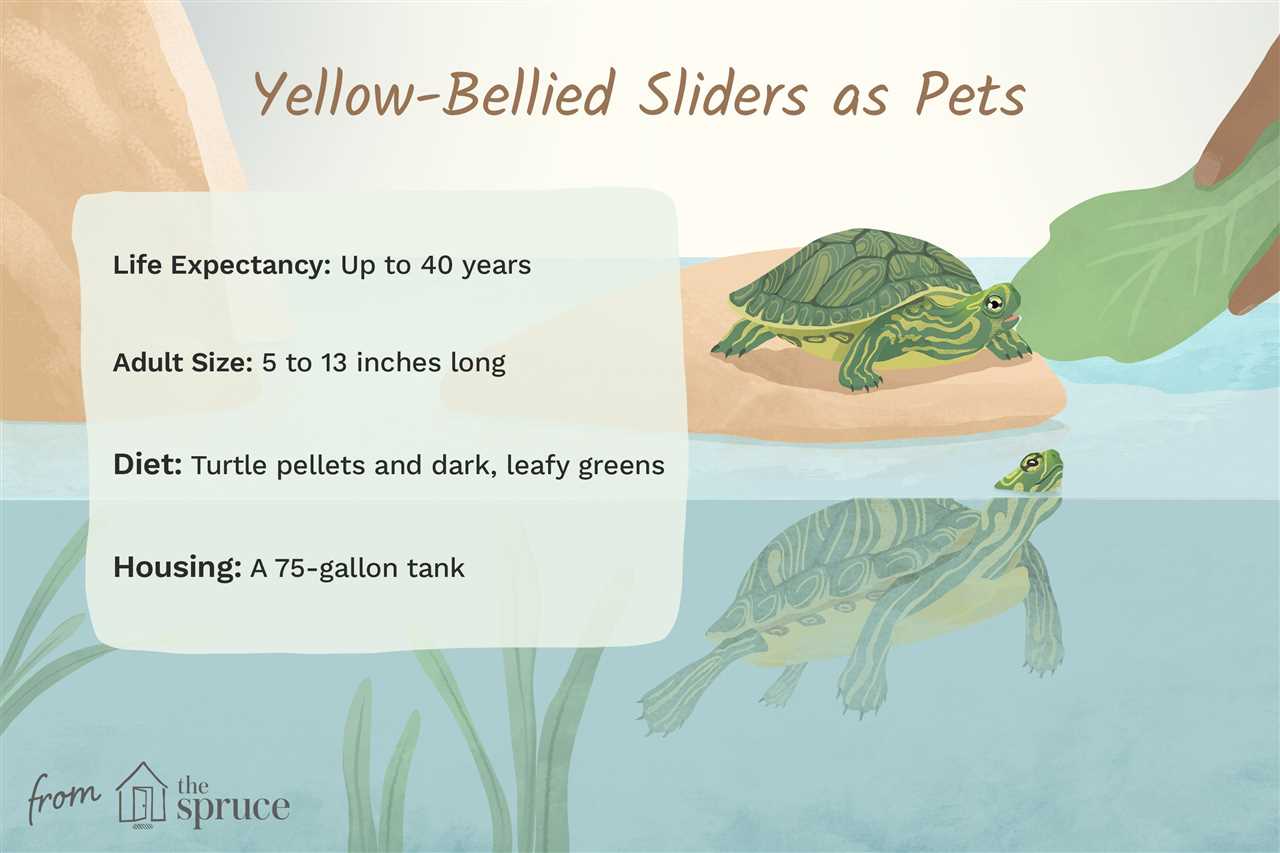
Yellow bellied sliders are popular and friendly pet turtles that require a suitable tank to thrive in captivity. As aquatic creatures, it is crucial to provide them with an environment that mimics their natural habitat. This means having a well-equipped tank that caters to their needs and ensures their well-being. Whether you are a beginner or an experienced turtle enthusiast, finding the best tank for your yellow bellied slider is essential for their happiness and longevity.
Another important aspect to consider is water quality. Yellow bellied sliders require clean and properly filtered water to thrive. A tank with a reliable filtration system is essential to remove waste and maintain optimal water conditions. It is also essential to regularly monitor and maintain the water temperature, ensuring it remains within the ideal range for the turtle’s well-being.
Choosing the Right Tank for Yellow Bellied Sliders
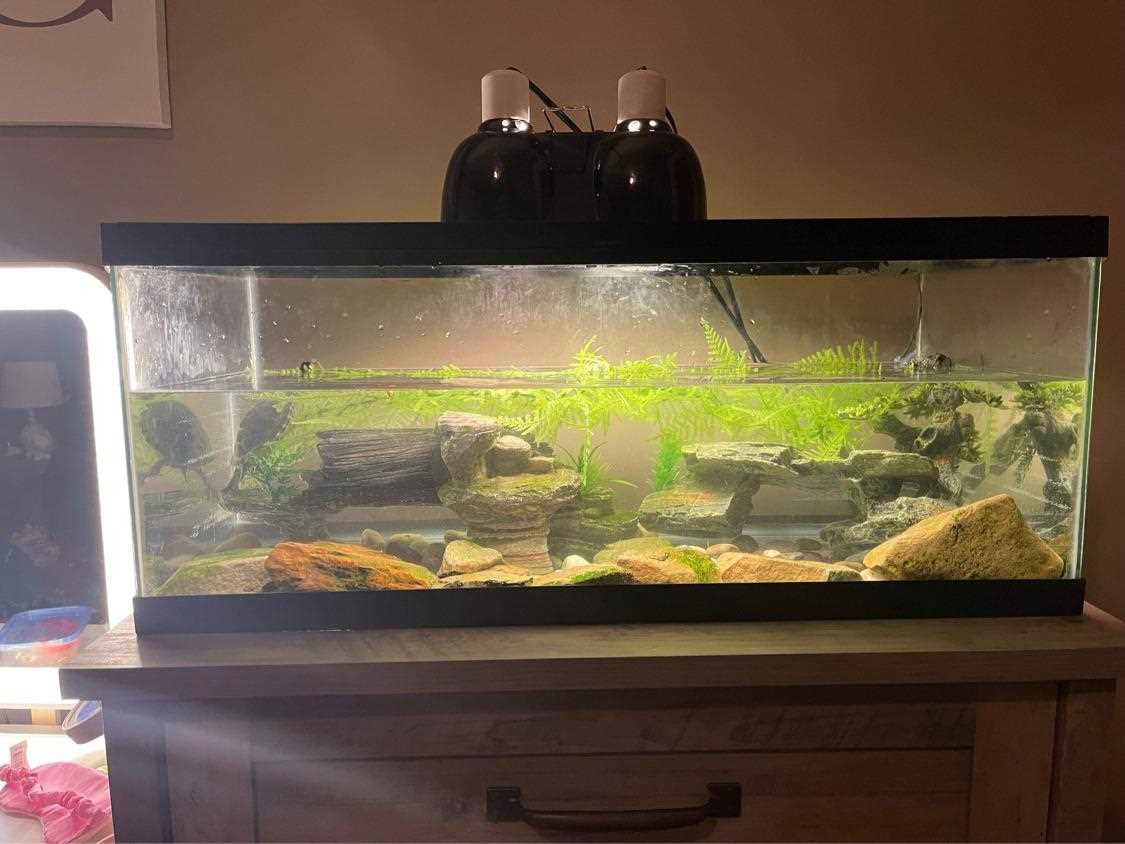
There are a few key factors to consider when selecting a tank for your yellow bellied sliders:
Size:
Shape:
Water and Land Area:
As semi-aquatic turtles, yellow bellied sliders need a tank that includes both water and land areas. The water area should be deep enough for the turtles to fully submerge, while the land area should be large enough for them to climb and bask comfortably. Aim for a 2:1 ratio of water to land.
Filter and Heater:
Proper filtration is essential to maintain clean and healthy water for your sliders. Look for a filter that can handle the size of your tank and provides adequate mechanical and biological filtration. Additionally, turtles are ectothermic, which means they rely on their environment to regulate their body temperature. Invest in a reliable heater to maintain a water temperature of around 75-80°F (24-27°C).
Accessibility:
Consider how easy it will be for you to access the tank for cleaning, maintenance, and feeding. Look for tanks with removable tops or front-sliding doors that provide easy access to the interior.
Material:
For tanks, both glass and acrylic options are suitable. Glass tanks are more durable and scratch-resistant but are generally heavier. Acrylic tanks are lightweight and can provide better insulation, but they are more prone to scratches. Choose the material that best suits your needs and preferences.
By considering these factors and selecting a tank that meets the specific needs of your yellow bellied sliders, you can create a suitable and comfortable habitat for them to thrive in.
Tank Setup and Maintenance
Setting up and maintaining the perfect tank for your yellow-bellied slider is crucial for their health and well-being. Here are some important factors to consider:
Aquarium Size
The size of the tank is important to ensure that your yellow-bellied slider has enough space to swim and move around comfortably. As a general rule, it is recommended to have a tank that is at least 10 gallons per inch of turtle. So, for example, if you have a 4-inch turtle, you would need a minimum tank size of 40 gallons.
Filtration System
Proper filtration is essential for maintaining a clean and healthy tank for your slider. You should invest in a quality filtration system that can handle the size of your tank and provide effective mechanical, biological, and chemical filtration. Regular maintenance, such as cleaning the filter media and replacing it when necessary, is also crucial.
Water Temperature
UVB Lighting
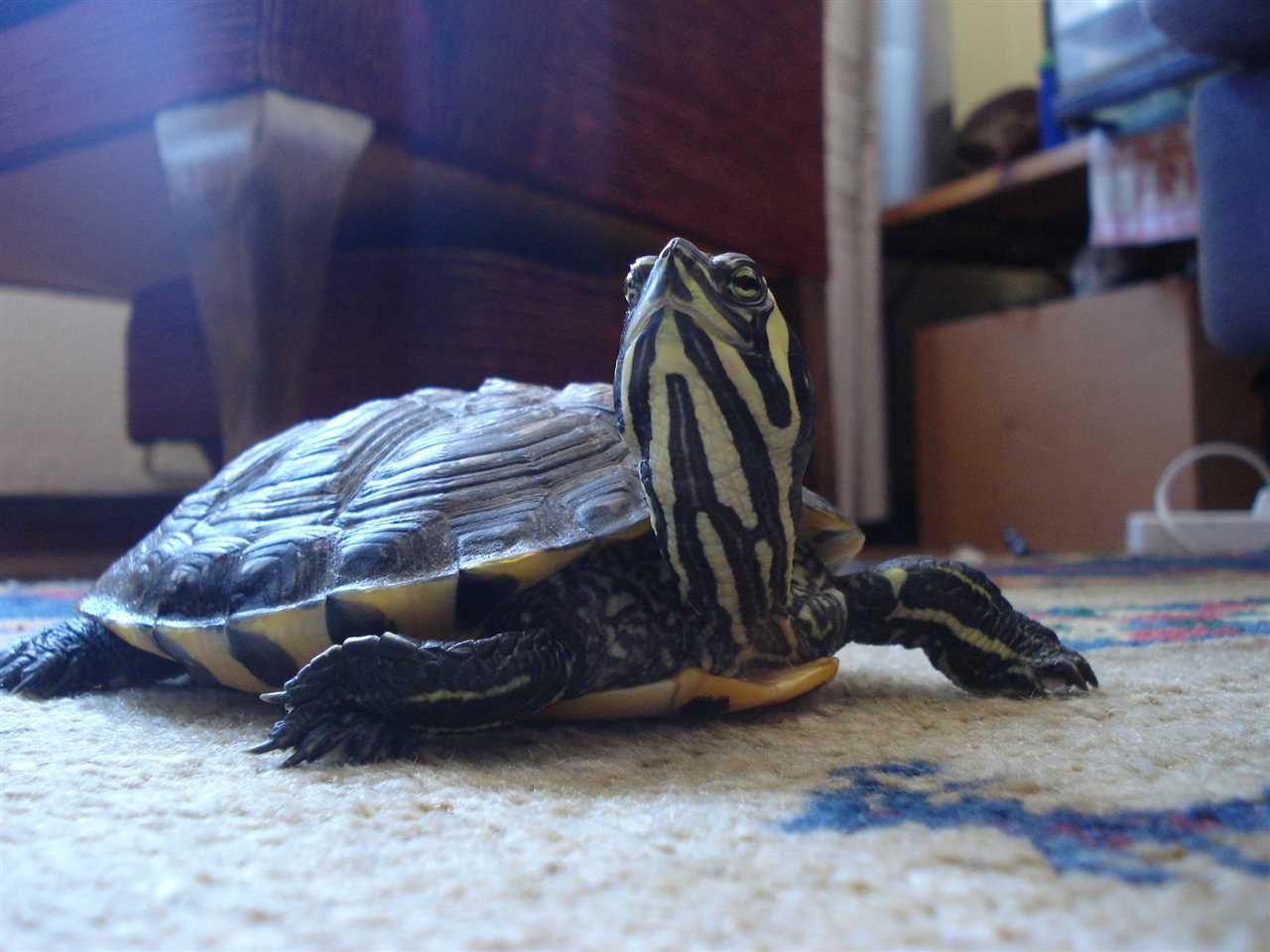
UVB lighting is essential for the health and proper growth of your yellow-bellied slider. These turtles need UVB rays to synthesize vitamin D3, which is important for calcium absorption and bone development. It is recommended to use a UVB light specifically designed for reptiles and follow the manufacturer’s instructions for proper placement and duration of use.
Cleanliness and Maintenance
Maintaining a clean tank is vital for your yellow-bellied slider’s health. Regularly remove uneaten food, debris, and feces from the tank to prevent fouling of the water. Perform partial water changes every week to maintain water quality, and clean and disinfect the tank and décor periodically using reptile-safe products.
By following these guidelines for tank setup and maintenance, you can create the perfect environment for your yellow-bellied slider to thrive in. Remember to regularly monitor water parameters, provide a varied and nutritious diet, and seek veterinary care when necessary to ensure the health and happiness of your pet slider.
Creating the Perfect Environment for Your Yellow-Bellied Slider Tank
Temperature and Lighting
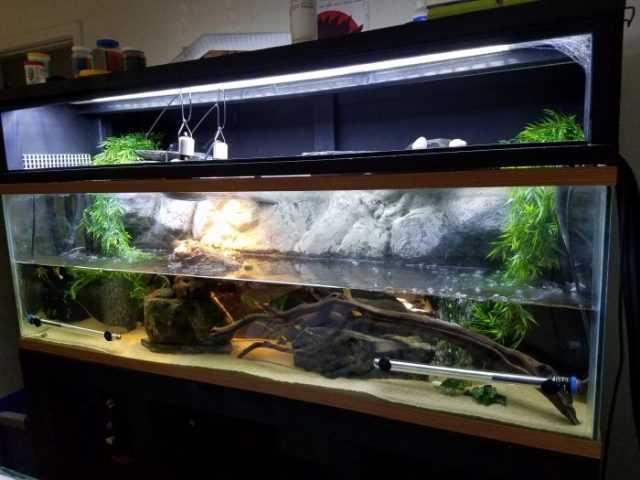
Additionally, providing UVB lighting is crucial for the health of your slider. These lights mimic natural sunlight and help promote the production of vitamin D, which is essential for shell and bone health.
Filtration and Water Quality
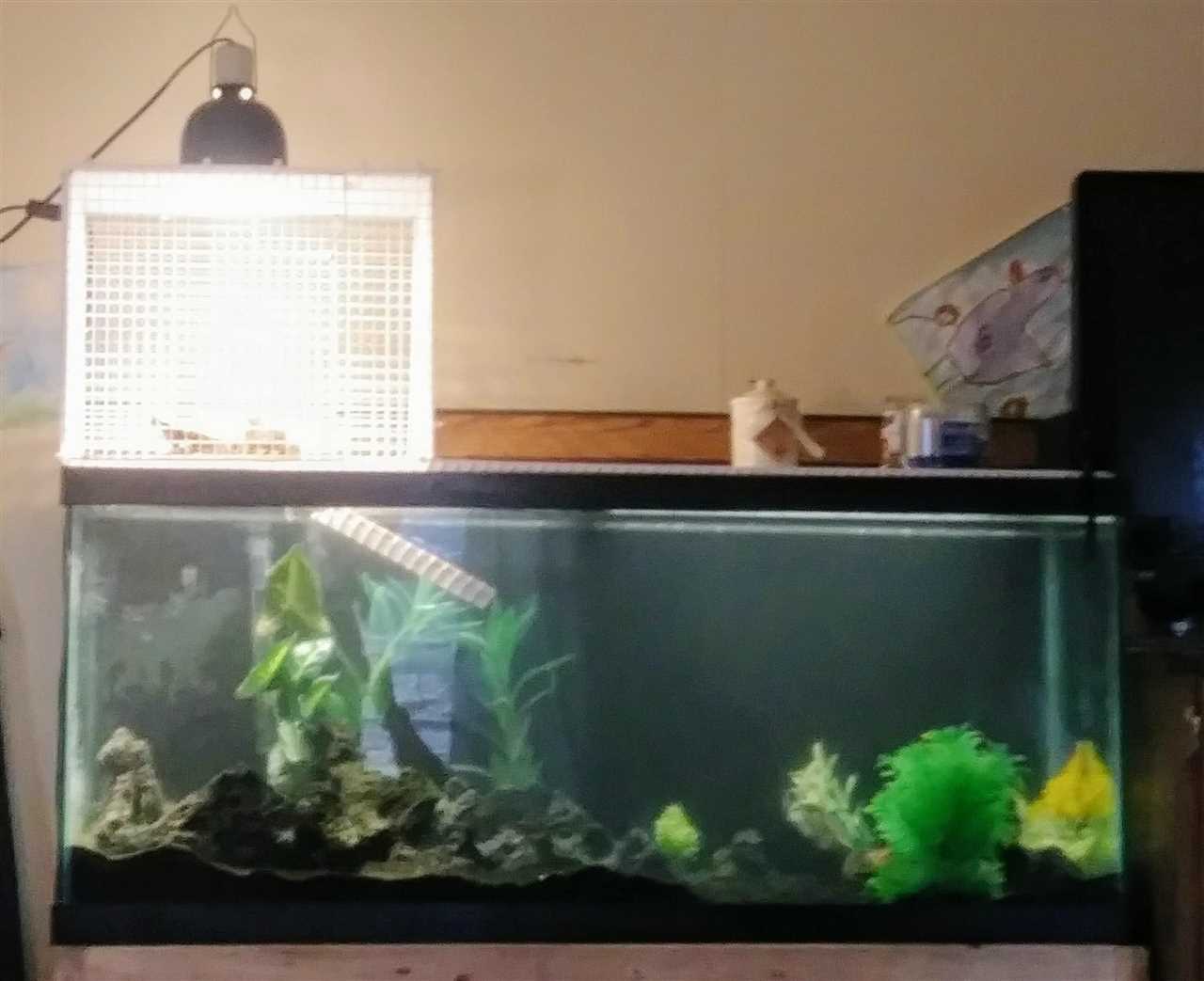
Keeping the water in your yellow-bellied slider tank clean and well-filtered is key to maintaining a healthy environment. Invest in a high-quality filtration system that can handle the tank’s size and water volume. Regular water changes are also necessary to minimize the buildup of waste and toxins. Aim to change around 25-50% of the water on a weekly basis, depending on the tank’s inhabitants and overall cleanliness.
Proper Substrate
Choosing the right substrate for your yellow-bellied slider tank is essential for maintaining cleanliness and providing a comfortable habitat. Avoid using small gravel or sand, as sliders may ingest it while feeding and potentially suffer from impaction. Instead, opt for larger, smooth river rocks or bare-bottom tanks, which are easier to clean.
Providing a large platform or basking area is also crucial for your slider’s well-being. This area should be big enough for them to comfortably bask and dry off. Use rocks or platforms that are easily accessible and can support the weight of your slider.
Decoration and Enrichment
While sliders don’t require elaborate decorations, providing some hiding spots and enrichment items can help keep them entertained and reduce stress. Adding aquatic plants, logs, and floating platforms can provide opportunities for climbing, exploration, and basking. Avoid using plastic plants or decorations that may be toxic if ingested.
By paying attention to these key factors and creating the perfect environment for your yellow-bellied slider, you will ensure that your pet thrives and lives a happy, healthy life.

I’m Lena Adams—a product of an unconventional upbringing in the African wilderness. My father, a daring explorer of African wildlife, sparked my fascination with reptiles, a passion that intertwined with the tragic loss of my mother during an expedition, leaving an indelible mark on my life. Driven to understand the creatures that captivated my parents, I embarked on my journey, sharing insights about reptiles, frogs, and lizards on my website. Through my explorations and conservation efforts, I honour my family’s legacy while seeking connections—to the creatures, nature, and the mother whose presence I yearn to understand.
